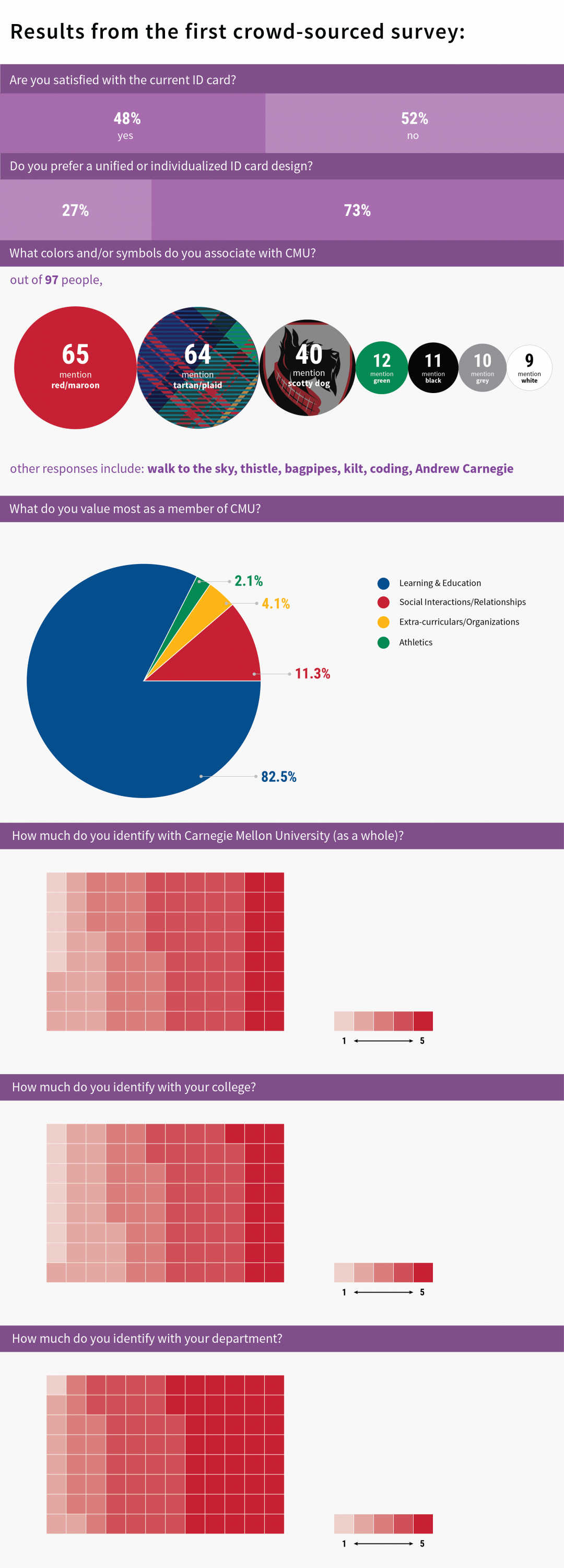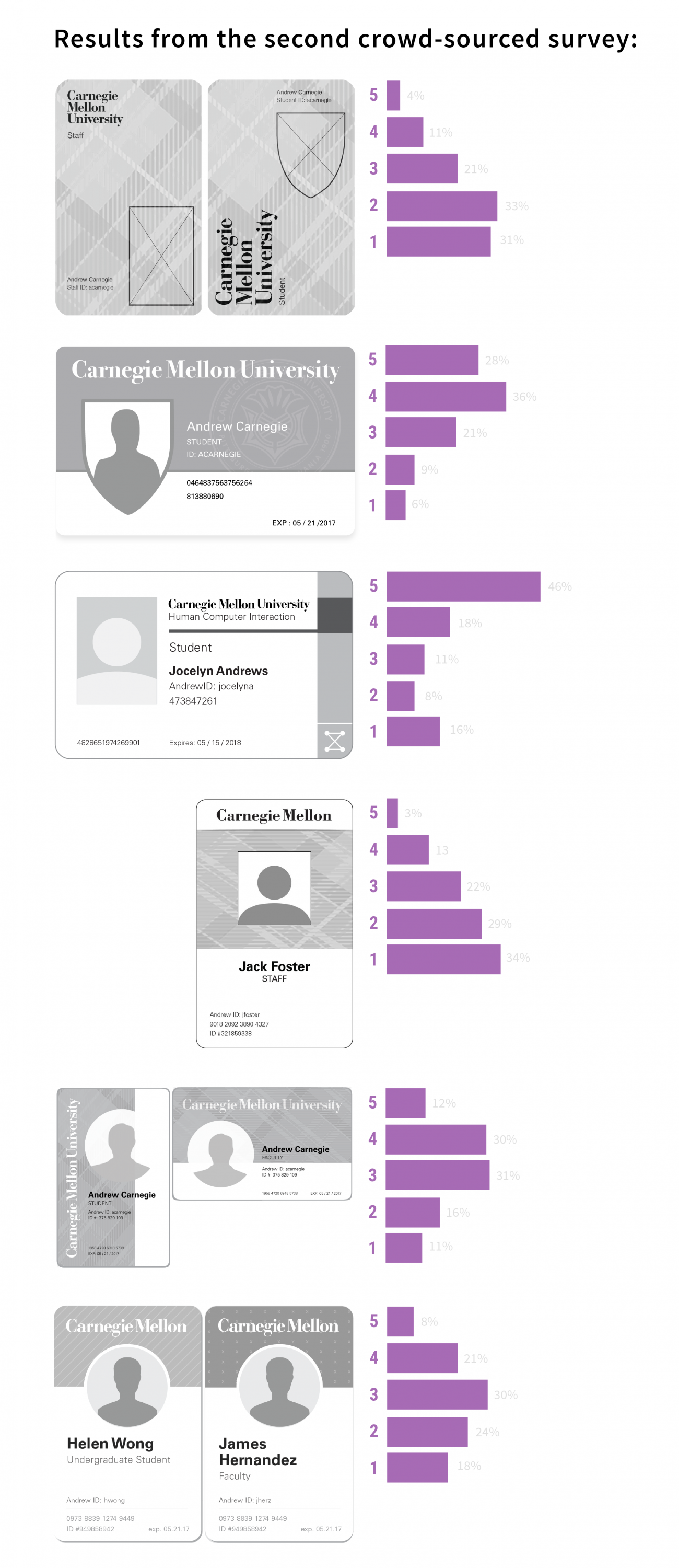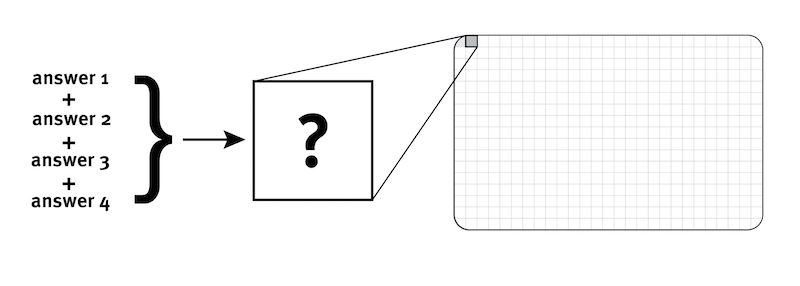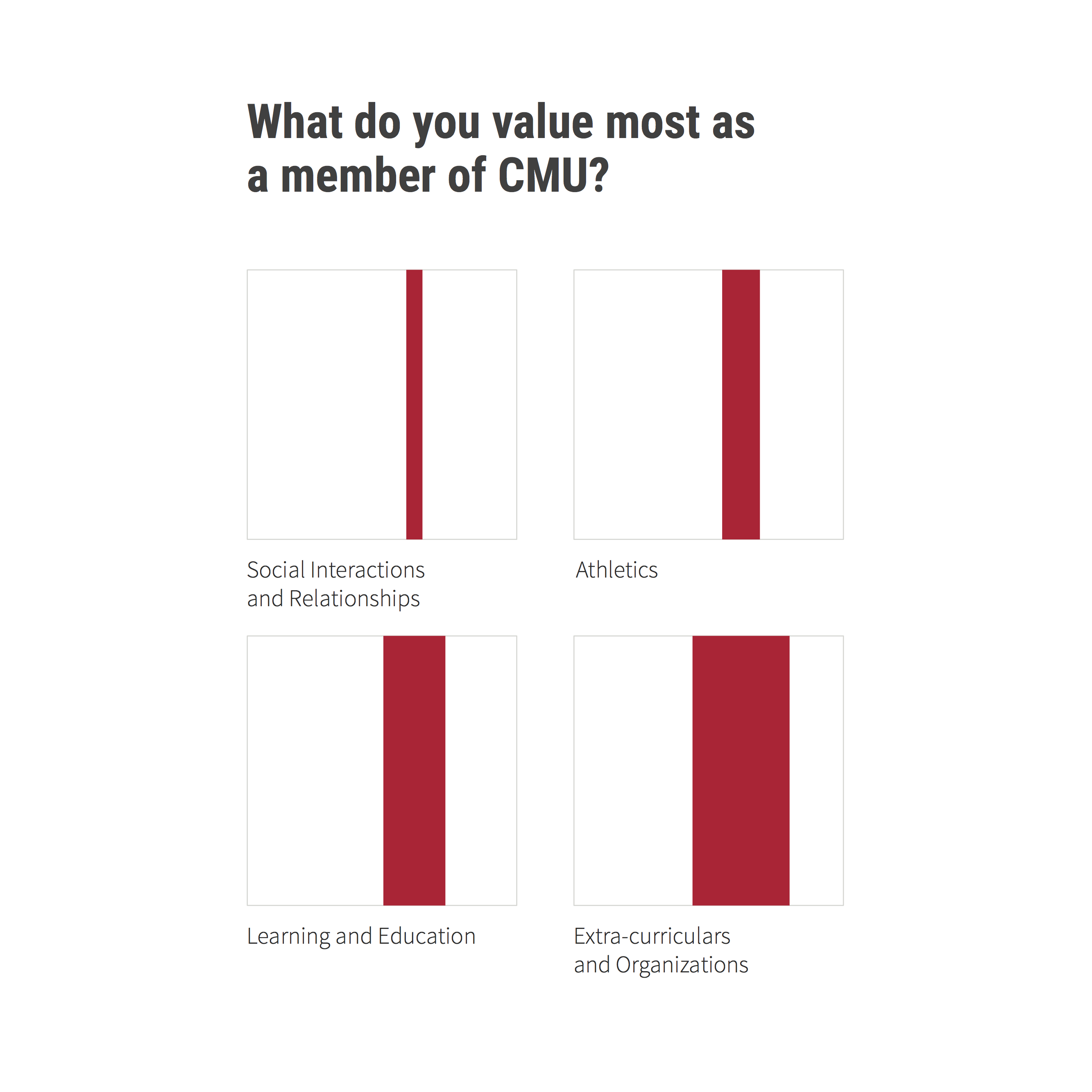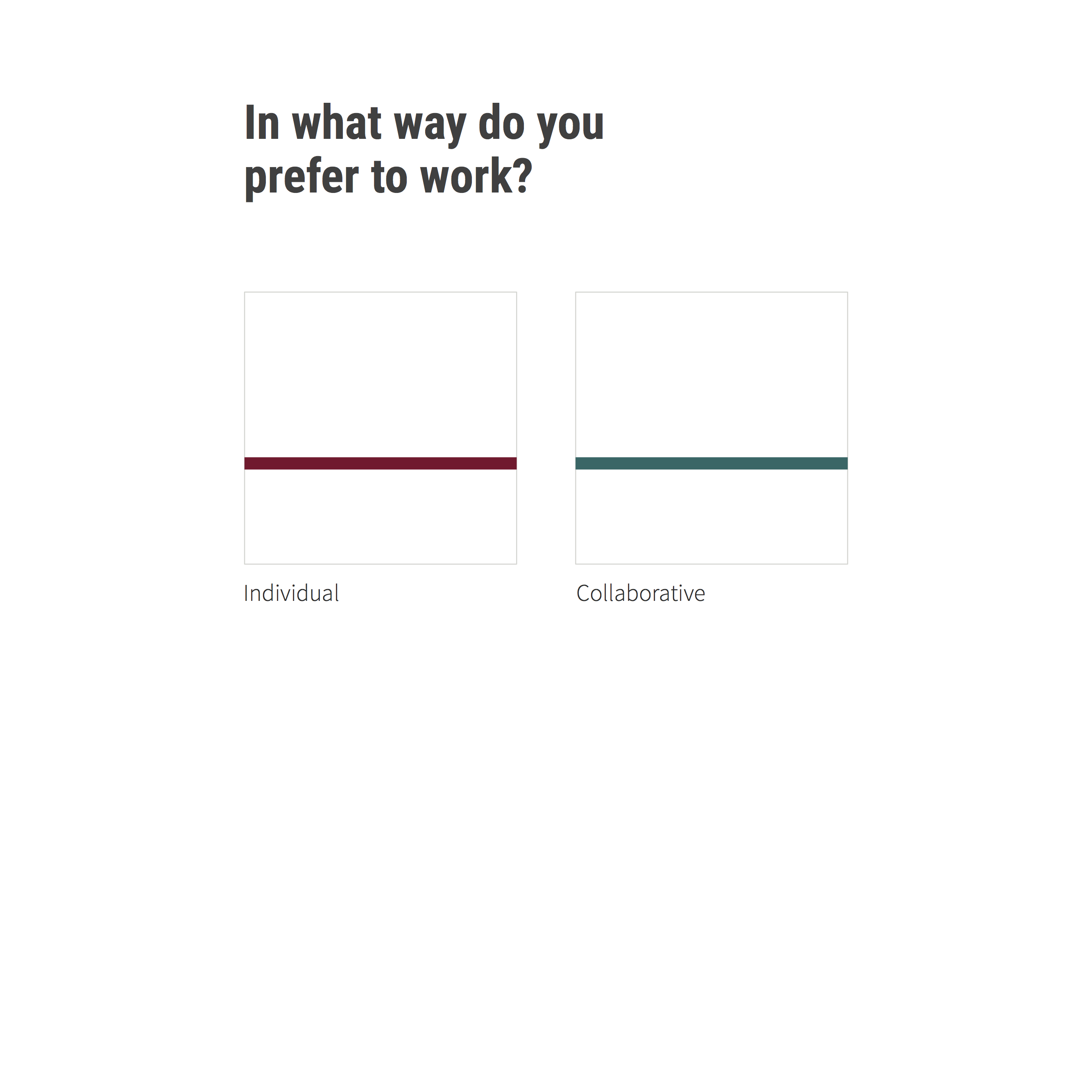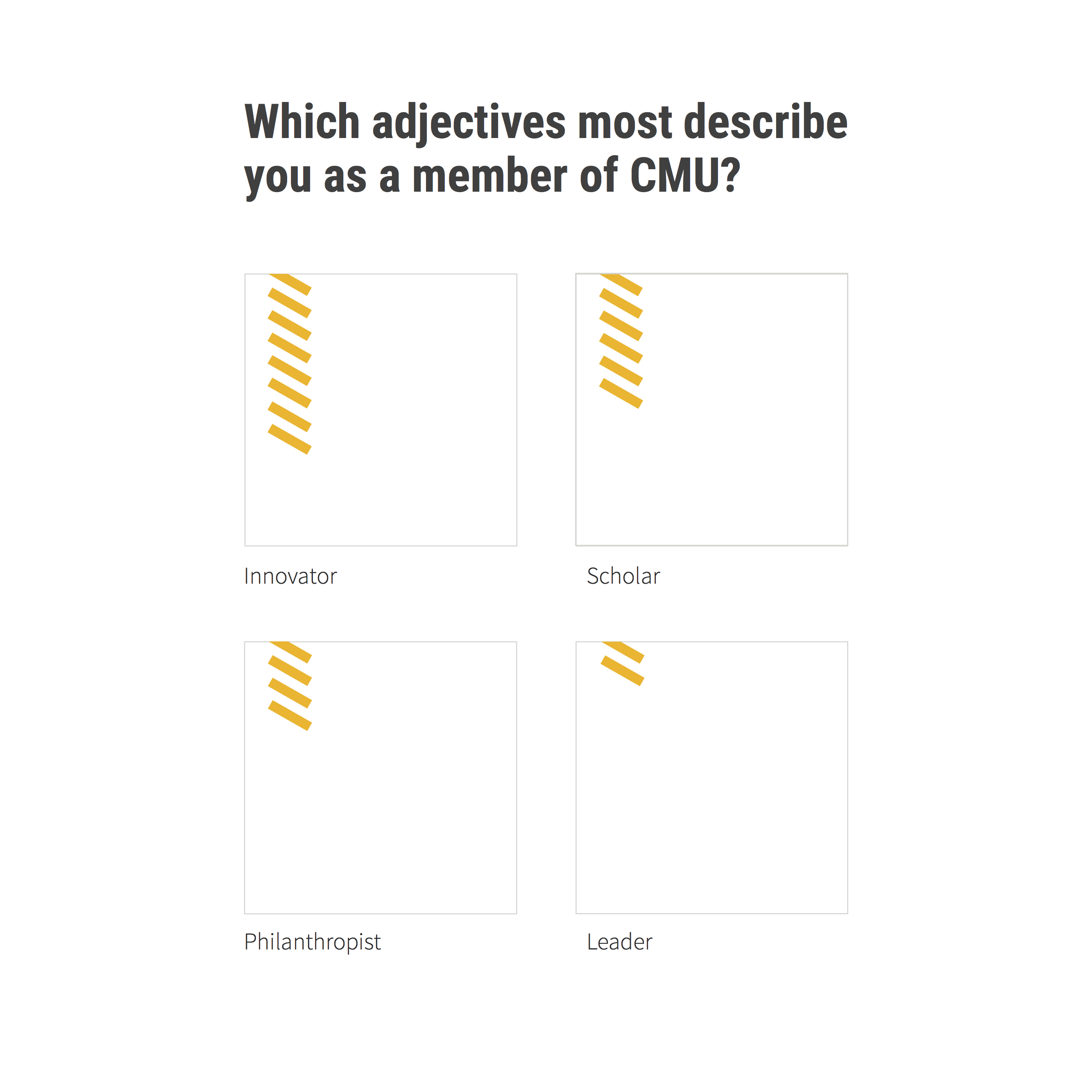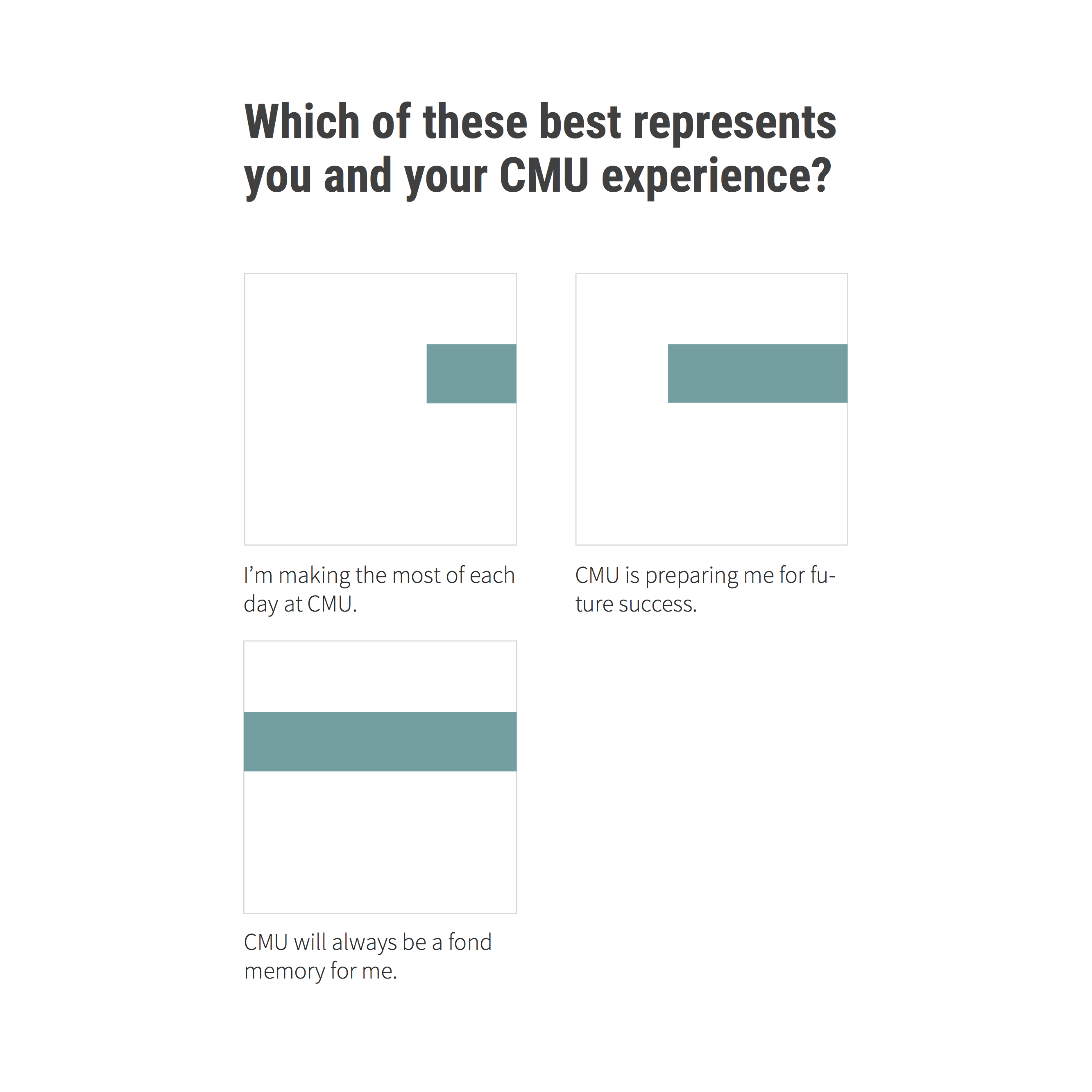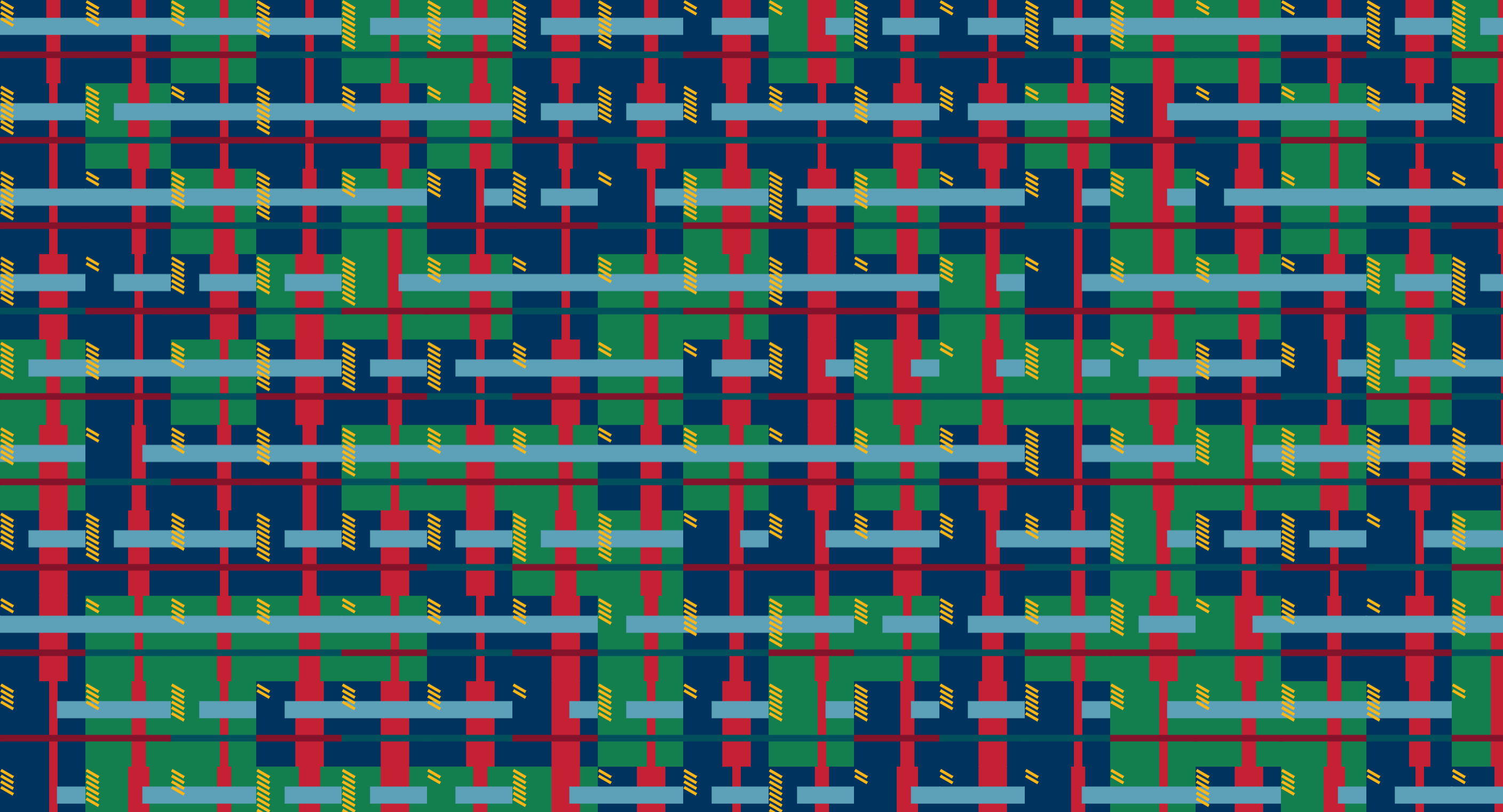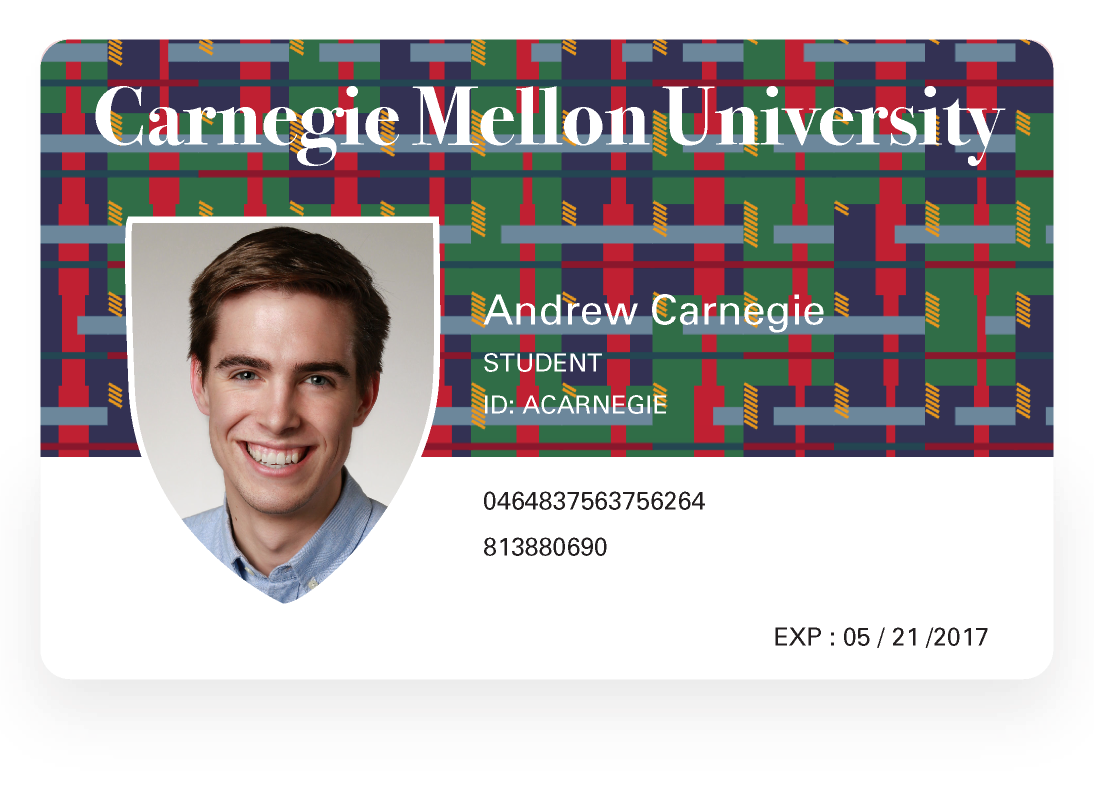Crowdsourcing design methods are often criticized for devaluing and misunderstanding the design process. Not only do clients receive finalized work without being involved in the preliminary research and iteration phases, but the designers themselves work long, unpaid hours with little assurance that their work will be selected.
Our team believes, however, that the crowd is a powerful and valuable resource in design. Particularly for the design of University ID cards, “sourcing the crowd” is especially important and even necessary. We approached this project, first, by redefining typical crowdsourcing processes by gathering valuable information from the crowd – members of Carnegie Mellon University – throughout each phase of the redesign (instead of holding a submission-based competition for the most suitable ID cards). We asked the crowd to inform, evaluate, critique and eventually generate data that would contribute to a dynamic ID card design.
(Find a demo of the crowd-sourcing platform prototype here.)
This project relied heavily on the interactions that our team formed with the crowd. A total of four surveys were sent out, each survey a response to the results of the last. Over 1400 students and staff were involved in this project.
Research with the Crowd
The first survey helped us identify the values and forms of identity that members of Carnegie Mellon University subscribe to. Starting with a look at staff/student’s connection with aspects of Carnegie Mellon University, we gained an understanding of individual and collective priorities and allegiances here on campus. This information was sourced for our 7 initial ID card designs.
Ideate with the Crowd
For the second phase of this project, our team each designed an ID card based on observations made from the first survey. 3 of 7 designs were individualized cards that responded to the unique attributes of each staff/student. The remaining 4 designs were unified card designs. Over 350 staff and students responded to these preliminary lo-fi sketches giving critique and up-voting or down-voting their favorites.
Participate with the Crowd
Nearing the end of this project, we found that it wasn’t enough to source this crowd for just up-votes and down-votes; to dive entirely into crowd-sourced design and to truly respect those participating, we wondered if there was a way to visibly incorporate the crowd’s unique attributes into our final design. This is what we came up with:
“In our previous survey, the Tartan was the most recognized CMU symbol. However, many participants have mixed feelings towards it. We propose an alternative, and invite the members of CMU community to help create a crowdsourced Tartan design that will appear on the ID card. Each of the four answers you submit would make up a specific geometric component within the design. Each of these components (representing an individual’s response) will then be compiled to create a pattern referencing the CMU Tartan.”
The following four multiple-choice questions brought to light the core values of this community and acted as the data that drove a new Tartan (find full questions below).
1) What do you value most as a member of CMU?
2) Which of the following best represents your CMU experience?
3) Which adjectives best describe you as a member of CMU?
4) In what way do you prefer to work?



